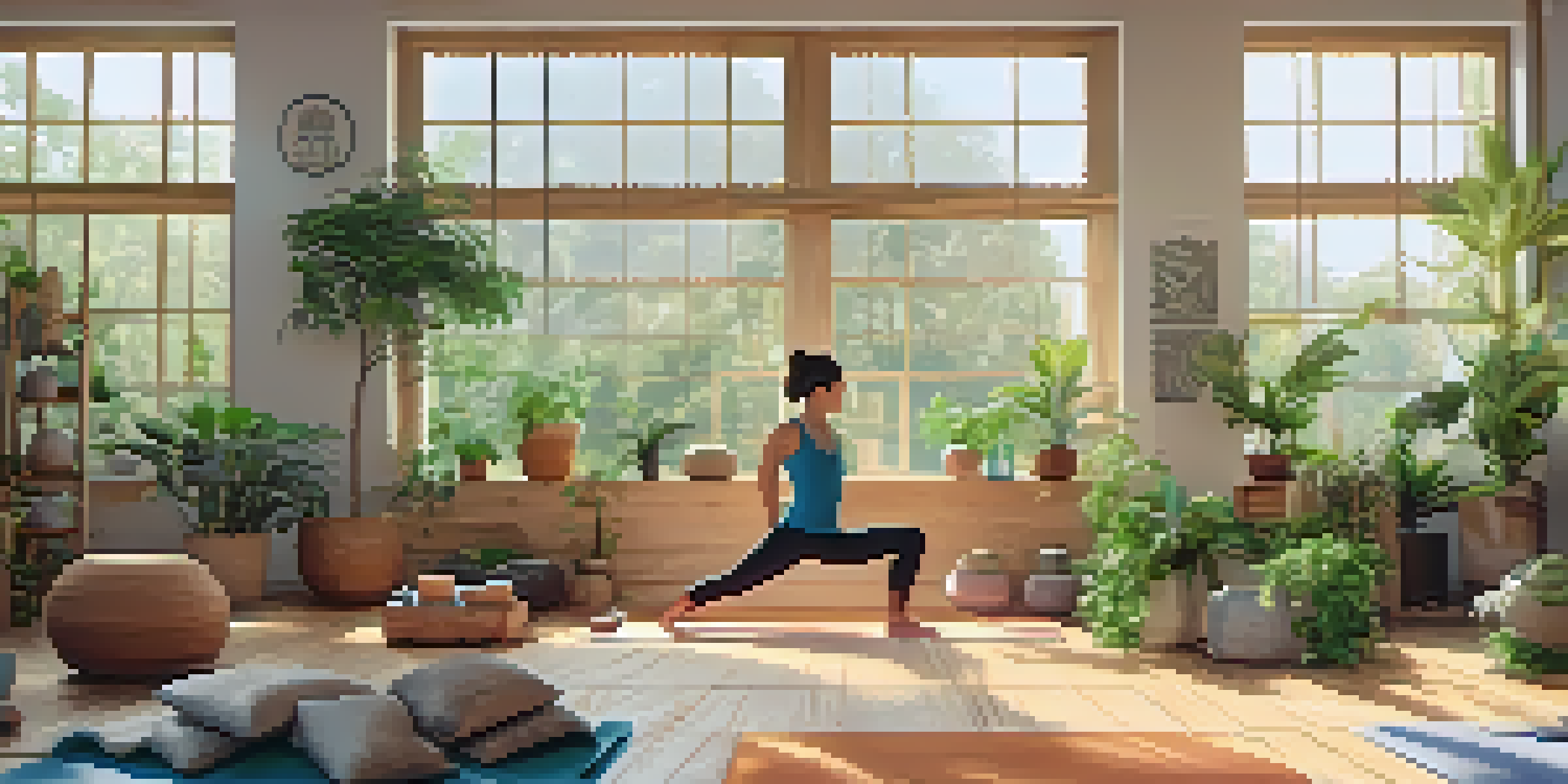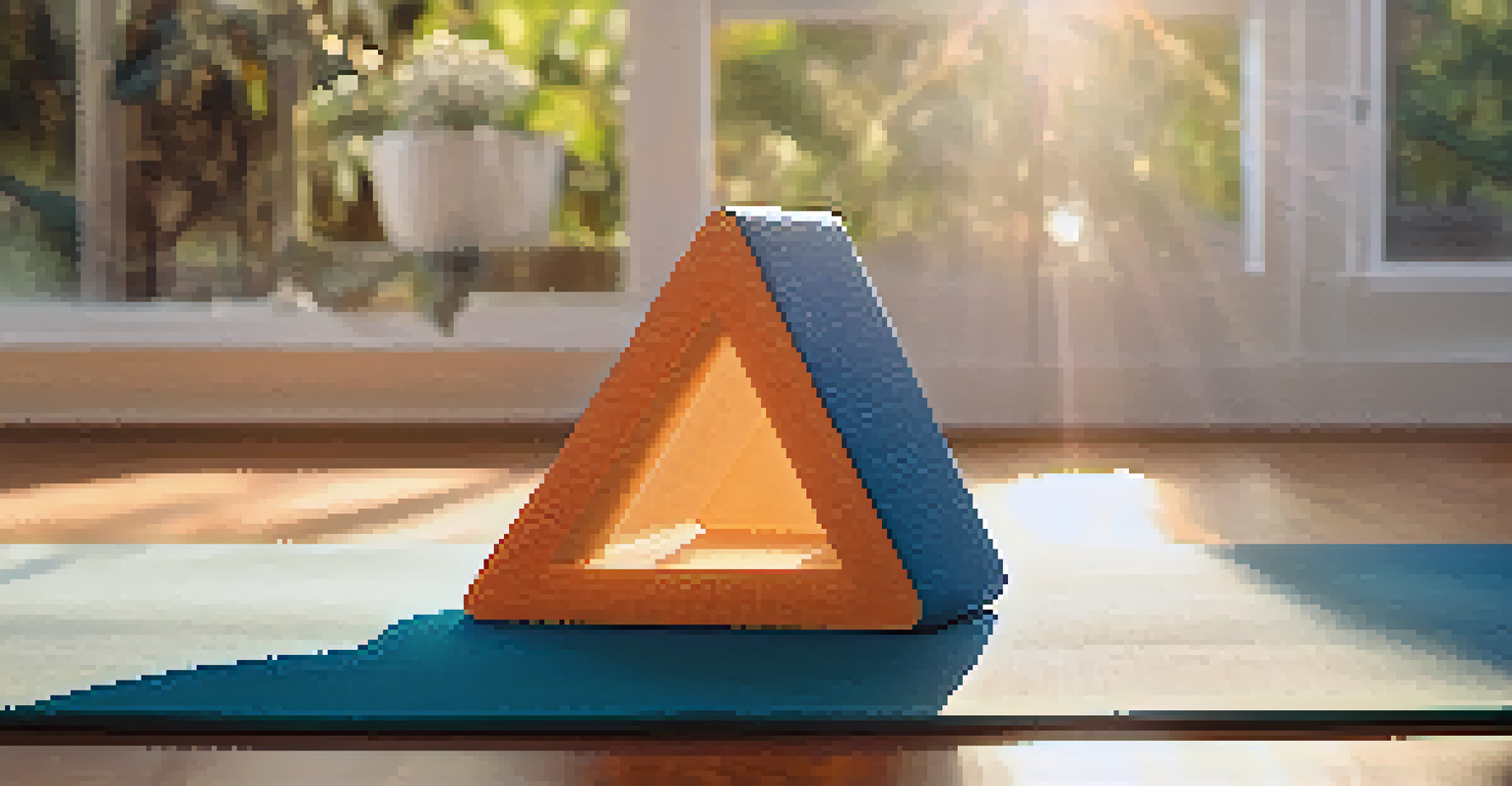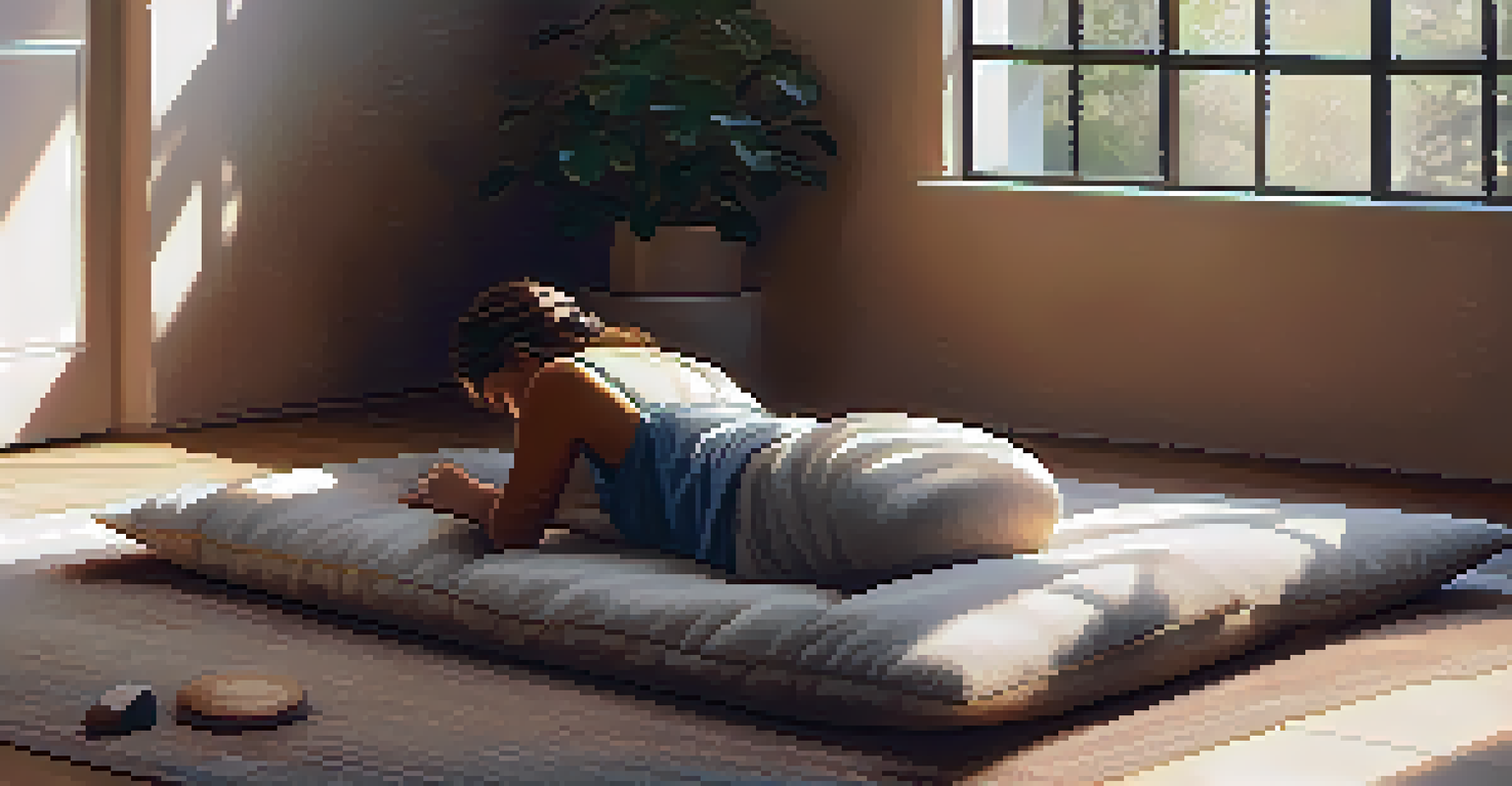How to Incorporate Props for Better Flexibility in Yoga

Understanding the Role of Props in Yoga Practice
Incorporating props into your yoga practice can significantly enhance your flexibility. Props such as blocks, straps, and bolsters provide support and stability, allowing you to explore deeper stretches safely. They act as extensions of your body, helping you achieve proper alignment in various poses.
Yoga is not about touching your toes, it is what you learn on the way down.
Using props can also make yoga accessible for practitioners of all levels, from beginners to advanced yogis. For someone just starting, props can alleviate the fear of not being able to reach certain postures, encouraging a more enjoyable experience. Moreover, they help in gradually building strength and flexibility over time.
Ultimately, props serve as valuable tools that enable you to listen to your body and modify poses according to your needs. By embracing these aids, you’ll not only improve your physical practice but also cultivate a deeper connection with your body and breath.
Choosing the Right Props for Your Needs
Selecting the appropriate props depends on your individual requirements and the specific poses you want to enhance. Yoga blocks are fantastic for providing extra height in standing poses, while straps can help you reach your feet in seated stretches. Bolsters are perfect for restorative poses, offering support and comfort.

When starting out, consider trying a variety of props to see what works best for you. Perhaps you find that blocks help you feel more secure in your practice, or maybe a strap allows you to deepen your stretches without straining. Experimentation is key to discovering what suits your body.
Props Enhance Flexibility and Safety
Using props like blocks, straps, and bolsters supports safe exploration of deeper stretches, improving overall flexibility.
Remember, the goal of using props is not to rely on them but to enhance your practice. As you grow stronger and more flexible, you may find you need them less often, but they will always be there to assist you on your journey.
Incorporating Blocks for Enhanced Stability
Blocks are one of the most versatile props you can integrate into your yoga routine. They can be used to bring the floor closer to you in standing poses, such as Triangle or Half Moon, making these poses more accessible. This added height allows for better alignment and stability, which is crucial for flexibility.
The body is your temple. Keep it pure and clean for the soul to reside in.
For seated poses, blocks can provide extra support, allowing you to maintain a comfortable position without straining your back. By elevating your hips with a block, you can open up your hips more effectively, which is essential for achieving deeper stretches like Forward Folds. This simple adjustment can make a world of difference.
Additionally, blocks can be utilized in inversions to create a safe space for your body. When transitioning into poses like Downward Dog or Handstand, placing blocks under your hands can help alleviate pressure on your wrists while providing a solid foundation.
Using Straps to Deepen Your Stretches
Yoga straps are fantastic for improving flexibility, especially when it comes to reaching those challenging poses. They allow you to pull yourself deeper into stretches without compromising your form. For instance, in a Seated Forward Bend, a strap can help you hold onto your feet, encouraging a more profound stretch along your hamstrings and back.
In addition to helping with flexibility, straps can also enhance your alignment. When practicing poses like Bound Angle, a strap can be looped around your feet, allowing you to maintain proper alignment in your knees and hips. This ensures you’re safely engaging the right muscles, reducing the risk of injury.
Choose Props for Your Unique Needs
Selecting the right props based on individual requirements helps enhance specific poses and accommodates all levels of practice.
Moreover, straps can be useful for working on strength, too. By incorporating them into resistance exercises, you can build the muscles necessary for achieving more advanced poses. So, while they’re great for stretching, they can also help you develop the strength needed to support your flexibility.
Exploring Bolsters for Restorative Practices
Bolsters are a wonderful addition to any yoga practice, especially during restorative sessions. They provide support and comfort, allowing your body to relax fully into the pose. This relaxation is crucial for enhancing flexibility, as it encourages your muscles to release tension.
When you feel supported, you’re more likely to hold poses for longer periods, giving your body the time it needs to stretch deeply. For example, using a bolster in Child’s Pose not only provides comfort but also helps to gently open your back and hips, promoting flexibility in these areas.
Additionally, bolsters can be placed under your knees or back in poses like Supta Baddha Konasana (Reclined Bound Angle) to create a sense of ease and support. This allows you to breathe deeply and fully, which can further enhance your overall experience and flexibility.
Blending Props into Your Flow
Integrating props into your yoga flow can create a more dynamic and enjoyable experience. Instead of viewing props as a crutch, think of them as tools that enhance your practice and allow for greater exploration. For instance, using blocks during a Sun Salutation can help you maintain proper alignment and engage your core more effectively.
As you flow through sequences, notice how props can shift your perspective. A strap can transform a simple stretch into a deeper exploration of your body’s limits, while a bolster can provide a moment of rest and recovery between more challenging poses. This blend encourages mindfulness and awareness in your practice.
Mindful Use of Props is Key
Listening to your body and adjusting props mindfully ensures a comfortable practice, allowing for gradual improvement in flexibility.
Incorporating props doesn’t mean you have to change your entire routine. Start small by using them in a few poses and gradually increase their usage as you become more comfortable. Over time, you’ll find that they can significantly enhance your flexibility and overall yoga experience.
Listening to Your Body While Using Props
One of the most important aspects of any yoga practice is tuning into your body’s needs. Props are there to support you, but it’s essential to use them mindfully. Pay attention to how your body feels when you incorporate different props and adjust accordingly if something doesn’t feel right.
For instance, if using a block feels too high or a strap feels too tight, don’t hesitate to make adjustments. The goal is to create a space where you can work towards flexibility without pushing yourself into discomfort or pain. Always prioritize your comfort and safety.

Additionally, remember that everyone’s body is different. What works for someone else may not work for you. Embrace the journey of discovering what feels best for your body as you explore various props and their benefits in your practice.